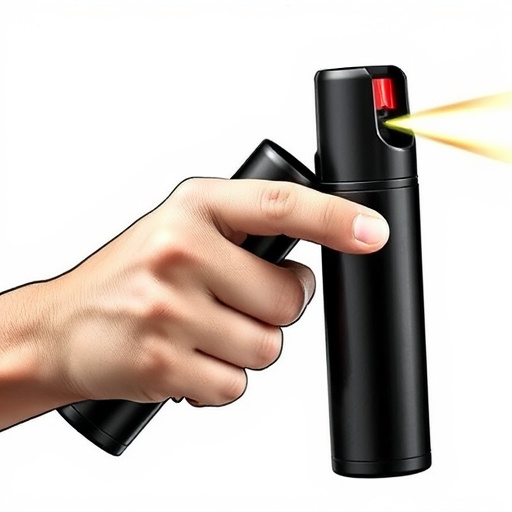TL;DR:
Immediate care after pepper spray exposure is critical to mitigate symptoms and prevent complications. Key steps include washing affected areas with water for 15+ minutes, ensuring fresh air access, removing contaminated clothing, and for eyes, continuous flushing with water. Trained officers follow these protocols while prioritizing bystander safety, using equipment like irrigation devices, and providing first aid. Prompt medical attention is recommended for severe cases or those with health conditions.
“In situations demanding crowd control, police often resort to pepper spray as a non-lethal weapon. This tactic raises crucial questions about its safety and potential risks. Our comprehensive guide delves into ‘Understanding Pepper Spray,’ exploring its effects and the considerations surrounding its use. Furthermore, we outline essential ‘Police Procedures’ for responsible deployment. In light of these strategies, we emphasize the critical need for ‘Immediate Care Strategies’ should individuals be exposed to pepper spray.”
- Understanding Pepper Spray: Its Effects and Potential Risks
- Police Procedures for Safe Pepper Spray Deployment
- Immediate Care Strategies Following Exposure to Pepper Spray
Understanding Pepper Spray: Its Effects and Potential Risks
Pepper spray, a popular crowd control tool used by law enforcement, is designed to disable individuals temporarily through targeted irritation of the eyes and respiratory system. While effective in de-escalating situations and dispersing crowds, it’s crucial to understand its effects and potential risks. The active ingredient, capsaicin, causes a burning sensation and can lead to symptoms like teary eyes, difficulty breathing, coughing, and pain. These effects usually subside within 10–15 minutes, but immediate care is essential for those exposed.
Proper immediate care for pepper spray exposure includes thoroughly washing the affected area with water for at least 15 minutes, seeking fresh air, and removing any contaminated clothing or jewelry. Medical attention should be sought if symptoms persist or worsen, as complications can arise, particularly for individuals with pre-existing respiratory conditions. Understanding these risks and knowing how to respond promptly is vital for both those in law enforcement and bystanders alike.
Police Procedures for Safe Pepper Spray Deployment
When deploying pepper spray, police officers must prioritize safety and minimal harm. Before using it, officers are trained to assess the situation, ensuring that other de-escalation methods have been exhausted. They look for a clear path of least resistance while considering the proximity of bystanders and vulnerable individuals. The goal is to target only the agitators while protecting innocent people from the spray’s effects.
Proper application involves aiming at the face, eyes, and nose, areas that are most sensitive to capsaicin, the active ingredient in pepper spray. Immediate care for those affected includes thorough eye rinsing, as pepper spray can cause severe irritation or even temporary blindness. Inhaling the spray can lead to coughing, difficulty breathing, and chest pain, so victims should be moved to fresh air if possible. Trained officers are equipped with irrigation equipment and first aid supplies to provide prompt assistance while ensuring the safety of everyone involved.
Immediate Care Strategies Following Exposure to Pepper Spray
After exposure to pepper spray, immediate care strategies are essential to alleviate symptoms and discomfort. The first step is to move to a safe, open area away from the source of the spray to prevent further inhalation or contact with the eyes and skin. Removing any contaminated clothing, shoes, or accessories promptly can help reduce the spread of the irritant. Rinsing affected areas with large amounts of clean water for at least 15 minutes is crucial to diluting and washing away the pepper spray residue.
For eye exposure, flushing with water should continue until any burning sensation subsides. It’s important to avoid rubbing or touching the eyes, as this can exacerbate irritation. If breathing becomes difficult, seek fresh air immediately and consider using a face mask if available. Staying hydrated by drinking plenty of water can help flush out the irritant from the body. In severe cases or for individuals with underlying health conditions, medical attention should be sought promptly.
In light of the above discussions on understanding pepper spray, police procedures, and immediate care strategies, it’s clear that while pepper spray can be a valuable tool in crowd control, its deployment requires careful consideration and safe practices. For individuals affected by pepper spray, prompt and proper immediate care is crucial to minimize discomfort and potential risks. By following these guidelines, both law enforcement agencies and the public can ensure safer interactions with pepper spray during crowd control situations.
